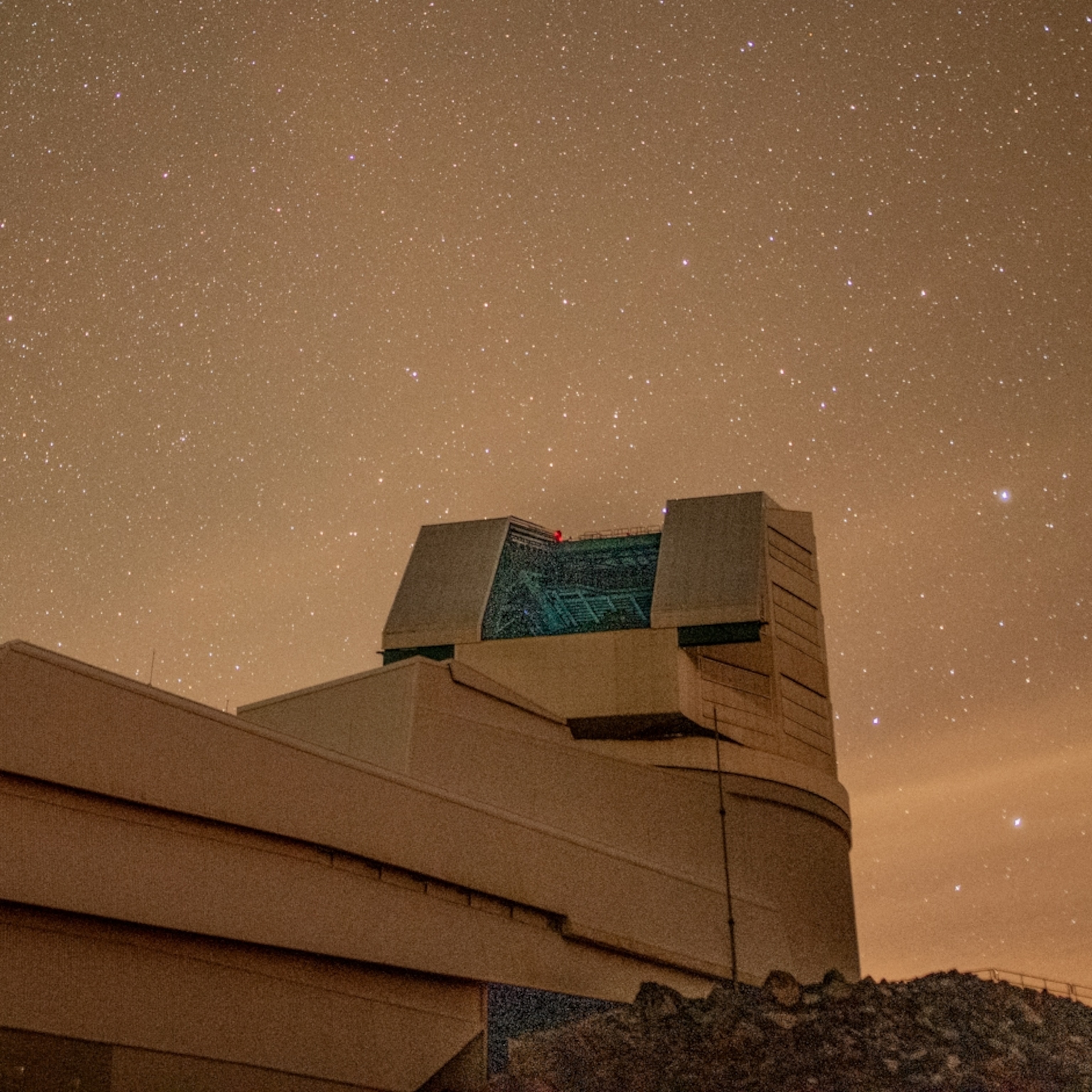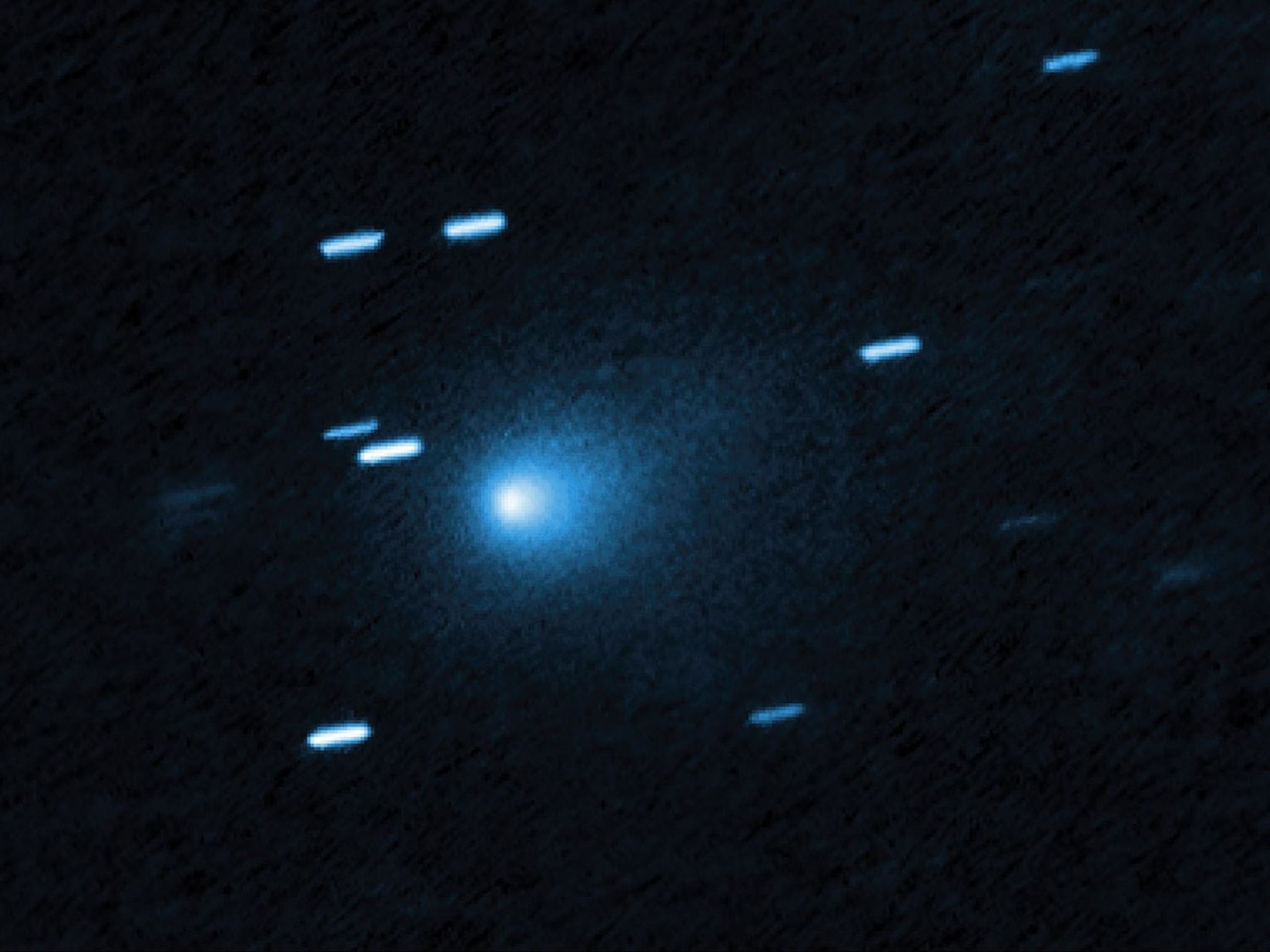Why NASA's high-stakes maneuver to redirect an asteroid surprised its own scientists
The DART spacecraft's collision changed a harmless asteroid's orbit more than expected, suggesting the technique could work if we need to deflect a real killer space rock.
After billions of years of being pummeled by asteroids, Earth struck back. To test a strategy that could knock a potentially hazardous asteroid off of a collision course with Earth, NASA slammed a spacecraft into a 500-foot-wide asteroid called Dimorphos, which orbits a much larger asteroid called Didymos—and the test was a smashing success.
Instead of merely nudging Dimorphos onto a slightly tighter orbital path, as expected, the Double Asteroid Redirection Test (DART) delivered a cosmic face-punch that shaved 32 minutes from the moonlet’s orbit. It also turned Dimorphos into something resembling a comet: The moonlet now has a dusty debris tail some 6,000 miles long.
“I don’t think most folks expected them to blast it to hell as much as they did,” says John O’Meara, chief scientist at the Keck Observatory, where astronomers recently observed the post-impact debris stream. “I guess when you beat up a rubble pile, it de-piles.”

To accomplish its mission, the spacecraft’s impact only needed to tighten Dimorphos’s orbit by just over a minute, a benchmark it far exceeded. And while it’s not the first time humans have crashed a spacecraft into a cosmic object—we’ve done that to the moon, a comet, and an asteroid to study the impacts—it is the first time we did so with the intent to alter the object’s orbit, and to prepare a strategy for deflecting any future killer asteroids.
“NASA is trying to be ready for whatever the universe throws at us,” NASA Administrator Bill Nelson told reporters on October 11. “We showed the world that NASA is serious as a defender of this planet.”
Swatting an asteroid
Roughly seven million miles from Earth, DART slammed into Dimorphos just after 7:14 p.m. ET on September 26. As it hurtled toward the moonlet at more than 14,000 miles an hour, the spacecraft furiously snapped images of its target. In a few minutes, Dimorphos grew from a hazy clump of pixels to an egg-shaped, boulder-strewn mini-world that filled the spacecraft’s field of view—growing larger and larger until the transmission abruptly cut off as the final image was coming in.
“Normally, losing signal from the spacecraft is a very bad thing, but in this case, it was the ideal outcome,” Ralph Semmel, director of the Johns Hopkins University Applied Physics Laboratory (APL), told reporters after the crash.
As astronomers suspected, Dimorphos is what’s known as a rubble-pile asteroid—a loose conglomerate of rocky blocks, rather than a single, solid mass. Less than three minutes after the collision, the Italian Space Agency’s LICIACube sailed by the wreckage and snapped images of the ballooning debris cloud. Megan Bruck Syal of Lawrence Livermore National Laboratory calls those images “incredible” and says that they’re helping researchers learn about how planetary impacts unfold in reality—which will inform the simulations she and her team work on.
The evening of the impact, ground-based telescopes caught images of DART completing its mission. One of them, the Asteroid Terrestrial-impact Last Alert System, saw a small pinprick of light that dramatically brightened, then shed an immense amount of debris—the pulverized rock that was thrown off of Dimorphos. NASA’s Hubble Space Telescope and James Webb Space Telescope also caught the collision, with Hubble images recording a three-fold increase in brightness because of all the reflective dust.
Over the past two weeks, astronomers pinned down the change in Dimorphos’s orbit using six ground-based telescopes. Four of them, in South Africa and Chile, watched the double asteroid system for the brief blips in brightness produced as Dimorphos orbits Didymos. The other two, in California and West Virginia, made radar measurements of the asteroids. Both techniques produced the same answer.
“This is a very exciting and promising result for planetary defense,” APL’s Nancy Chabot, DART coordination lead, said during the October 11 briefing. ”It’s within the range of the models that have been studied, but it’s also definitely indicating that you're getting an enhanced deflection due to the amount of ejecta—that rocky material that’s thrown off.”
Studying the aftermath
For DART’s mission to have been considered a success, the impact needed to shorten Dimorphos’s 11-hour, 55-minute orbit by at least 73 seconds. Mission leaders were optimistic that the difference would be significantly larger, closer to 10 minutes, but more than 30 minutes hadn’t come up as a favored possibility in pre-impact conversations with reporters. Now DART scientists are busy studying the plume created by the impact, trying to determine how much material was ejected, how large the debris is, and what it’s made of. They’ll also be making even more detailed observations of Dimorphos’s new orbit to work out how circular it is and whether it wobbles.
Such a dramatic shift in orbit suggests that ramming a spacecraft into an asteroid to knock it off course is a reasonable way to deflect hazardous asteroids that threaten Earth in the future. Called the kinetic impactor strategy, the method is potentially scalable to deflect much larger space rocks that could cause mass extinctions on Earth, as long as they’re detected early enough.
But there’s a drawback to the DART strategy: All the dust that now swaddles the asteroid system could be dangerous to additional spacecraft. This could present a problem if one impact isn’t enough.
“In a real emergency, we might need to impart a much larger change in velocity, and the asteroid might be more massive,” Syal writes in an email. “If we needed more than one kinetic impact to successfully move an asteroid off of an Earth-impacting trajectory, a dust-filled environment may be more challenging for navigating a second impactor at the target asteroid.”
In addition, not all asteroids are loose rubble piles like Dimorphos, so the effects of any hypothetical planet-saving mission would depend on that asteroid’s specific properties. “This is one test on one asteroid,” says NASA’s Lori Glaze, director of the agency’s planetary science division. “The way they react is going to depend on whether they are solid or whether they are this collection of rubble.”
Even so, the DART experiment has provided a wealth of information to Earth’s planetary defense teams working to protect our watery blue world and the billions of species that rely on it to survive.








